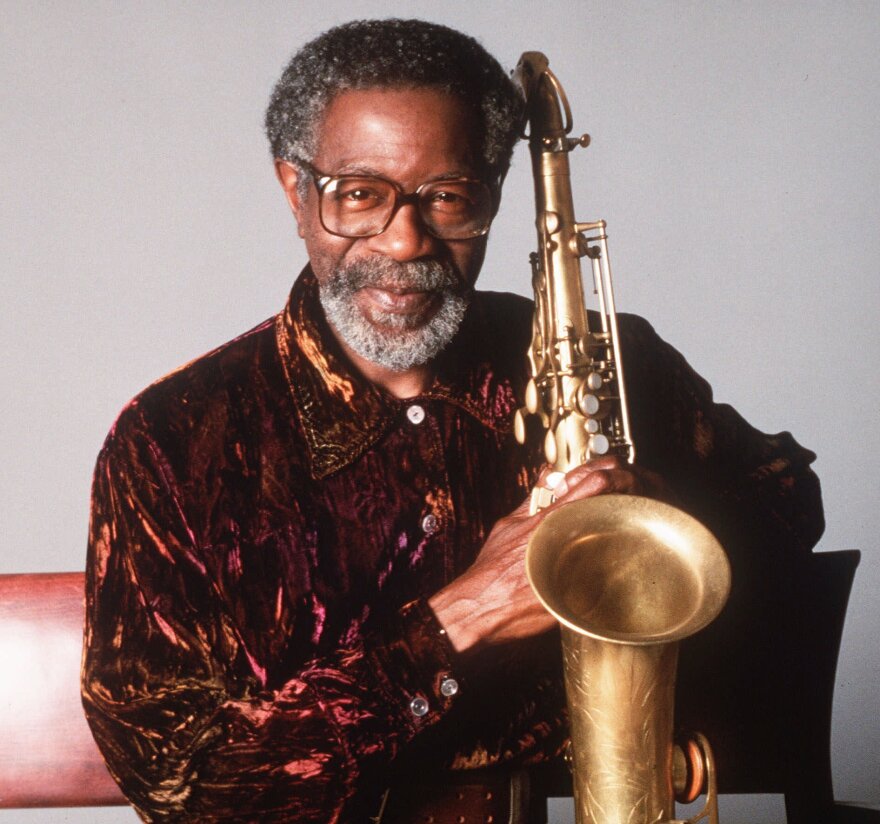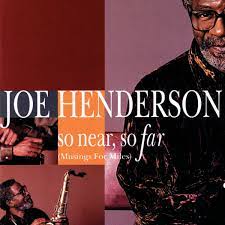Joe Henderson raised the standard of tribute albums from homage to art with the sessions he devoted to Billy Strayhorn and Miles Davis in the early nineties. They also marked a veritable rebirth of Henderson as a major figure in music. His album of Strayhorn tunes, Lush Life, earned Joe a Grammy for which everyone was delighted. It was Henderson’s first release for Verve, and its success enabled him to undertake four more ambitious projects that would have been inconceivable without major label support.
These included a memorial to Miles Davis, So Near, So Far; and an album of songs by Antonio Carlos Jobim, Double Rainbow, recorded a year after Joe’s appearance with Jobim in Sao Paulo, Brazil. The Brazilian idiom had long been an inspiration for the Lima, Ohio native. Henderson’s brilliant 1963 debut, Page One, followed a tour of Brazil with Kenny Dorham, and featured two new bossa novas, Dorham’s “Blue Bossa” and Henderson’s “Recorda Me,” that soon became standards. In 1996, Henderson fulfilled a career-long goal of making a big band record with the hard-swinging Shade of Jade. It featured arrangements by Henderson, Slide Hampton and Michael Philip Mossman, solos by Chick Corea and Nicholas Payton, the high-note lead of trumpeter Jon Faddis, and the thrill of hearing such Henderson gems as “Isotope,” “Step Lightly,” “Inner Urge,” and “Black Narcissus” played by a surging, 18-piece orchestra. The following year he took a new look at Porgy & Bess, playing graceful small-band arrangements by Bob Belden marred only by undistinguished cameos by Chaka Khan and Sting. The latter proved to be his swan song. Henderson died in 2001 at the age of 64 after a long bout with emphysema.

Lush Life was followed by So Near, So Far (Musings for Miles). Joe had played with Miles for a minute in 1967 when the trumpeter expanded his quintet to include two tenors. Alas, that edition went unrecorded, but on Musings, Henderson gives more than a hint of how well his sonorous tenor would have complemented Miles and Wayne Shorter. Davis alums John Scofield, Dave Holland, and Al Foster proved to be ideal counterparts on the memorial. Produced by Richard Seidel and Don Sickler, Musings offers a well-balanced selection of well-known Davis originals, “Miles Ahead,” “Flamenco Sketches,” “Joshua,” and “Milestones,” alongside such rarely played Miles as “Swing Spring,” “Teo,” “Side Car,” and the title track.

I found an interview this morning with saxophonist Jerry Bergonzi in which he discusses the astrological Four Elements of Air, Water, Fire, and Earth. Gonz hears in Henderson a powerful mix of Earth and Air. “He can be playing some far out stuff [Air] and all of a sudden he comes back [to Earth] and grounds it and plays some groove that knocks you off your feet. He’s amazingly smart and fleet.”
I also came across this filmed interview with Henderson and John Scofield that Bret Primak conducted for a JazzTimes feature in 1995. The guitarist collaborated on three of Joe’s Verve releases, and their musical rapport carries over into this relaxed dialogue which touches on, among other things, the thorny issue of whether or not stylistic originality was increasingly being lost in jazz. https://www.youtube.com/watch?v=B5dpkkzCgJk
Here’s Joe in great form with Dave Holland and Al Foster in a 1993 performance of “Serenity,” one of the originals that Henderson introduced when he emerged as an impressively mature and dynamic new voice in the mid-sixties.